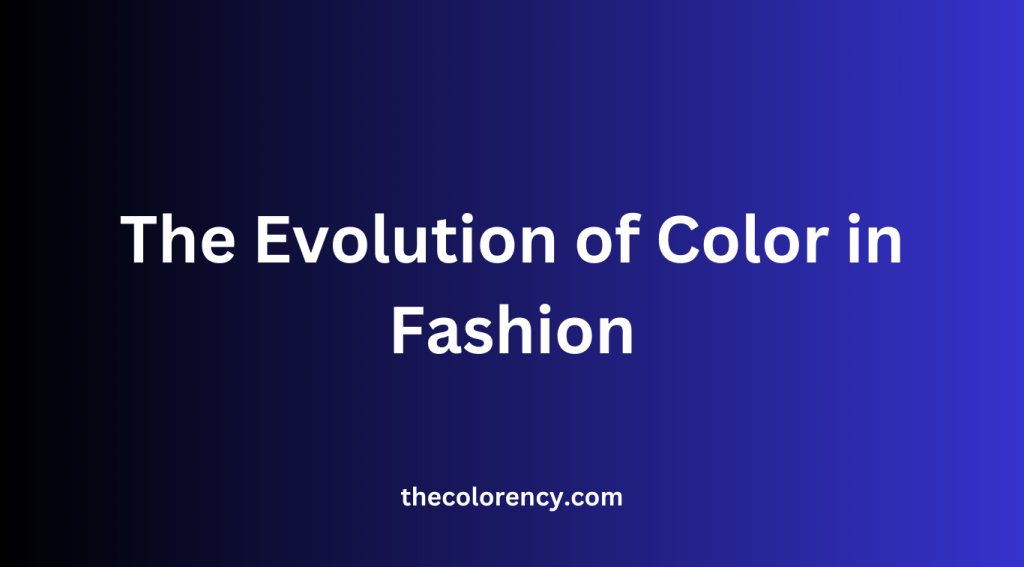
Color has always played a significant role in fashion, from its cultural and symbolic meanings to its aesthetic appeal. It has the power to evoke emotions, convey messages, and even influence consumer behavior. In this blog post, we will explore the history of color in fashion, from its early beginnings to the current trends.
The Early History of Color in Fashion
The history of color in fashion dates back to ancient times.
Back then, brightly colored clothes made of natural dyes represented elegance and status.
The Greeks and Romans were among the earliest civilizations to experiment with color.
They think purple is the famous color of royalty.
Italian fashion designers played a major role in revolutionizing the fashion industry during the Renaissance period. They introduced new colors that became fashionable at that time. Some of these colors were the captivating red and tranquil green.
Color was used to represent status and social hierarchy in both Europe and Asia. In Asia, the use of color in clothing was prevalent and had cultural significance. For example, the imperial yellow robes of the Chinese dynasties and the vividly colored silk kimonos of Japan. Over time, the fusion of various cultures has led to the evolution of color in fashion. Today, color is an integral part of the fashion industry.
The Evolution of Color in Fashion
Color has always been an essential element of fashion. Over time, the use of color in fashion has changed over time. It reflects the cultural, social, and technological developments of each era.
Ancient times Color in Fashion
In ancient times, people used natural dyes to color fabrics, deriving them from plants, roots, and insects. These dyes offered a limited range of colors to choose from. Only the wealthy and distinguished could afford the bold and vivid hues like red, blue, and purple. The lower classes had to settle for more modest and subdued colors.
Medieval times
During the medieval period, fashion favored brighter and more striking colors. This included shades of gold, silver, and crimson. Artisans and designers incorporated precious metals, such as gold and silver, to achieve vibrant colors. They embellished garments with intricate details and patterns. The growth of trade routes led to the discovery of new and exotic dyes, such as indigo and madder. This offered a broad spectrum of hues for designers to choose from, expanding their artistic horizons.
Renaissance and Baroque eras
During the Renaissance and Baroque eras, fashion became more lavish and extravagant. This was characterized by the use of rich and bold colors. Deep shades of red, green, and blue were in fashion, achieved through expensive pigments like ultramarine and vermilion. These colors were a symbol of opulence, and the wealthy flaunted their wealth by wearing the most vibrant hues. As a result, color became an important means of social distinction. The upper classes wore the most vivid colors, while the lower classes had to settle for more subdued and muted tones.
18th and 19th centuries
During the 18th and 19th centuries, the Rococo and Neoclassical styles influenced a shift towards lighter and more delicate colors. Pastel shades, including soft pinks, blues, and greens, were in vogue, emphasizing a sense of femininity and fragility. The Industrial Revolution changed the fashion industry significantly, with the invention of synthetic dyes enabling the creation of brighter and more vibrant colors that were more accessible to the general public.
20th century
The 20th century ushered in a revolutionary era of color experimentation in the realm of fashion. The Art Deco movement, which occurred in the 1920s, brought a burst of creativity to fashion. It introduced daring and contrasting hues such as stark black and white, along with sharp and striking geometric shapes. The 1960s and 70s saw a vivid resurgence of color, where psychedelic patterns and vibrant hues became popular. This was influenced by the free-spirited counterculture movement. In the 1980s, there was a surge of neon and fluorescent tones in fashion. This was fueled by the upbeat and flamboyant music and fashion trends of the time.
21st century
The 21st century has witnessed a dynamic transformation in the use of color in the fashion industry, marked by an unprecedented diversity and inclusivity. The fashion world has now embraced a broad spectrum of skin tones, cultural identities, and gender expressions, leading to an inclusive and eclectic range of color palettes. Furthermore, sustainability has emerged as a pivotal concern, propelling the use of natural dyes and eco-friendly synthetic dyes. This conscious shift towards eco-friendly dyes and sustainable practices has not only encouraged the preservation of the environment but also generated novel color options that are both stunning and environmentally responsible.
Conclusion
The evolution of color in fashion reflects the changing times and cultural attitudes of each era. From the limited natural dyes of ancient times to the bright and bold colors of the 20th century and the inclusive and sustainable color palettes of the 21st century, color in fashion continues to evolve and change.
